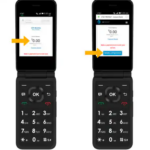The search term “500 text message” refers to a sequence that often appears in the detailed usage records of T-Mobile customers. It is important to know that 500 is not a message you can read in your standard text app, nor is it a number you can dial.
The direct answer is that the 500 short code is a legitimate, internal system identifier used by the T-Mobile network (and previously Sprint) to log specific types of messaging activity. It functions as a placeholder to categorize data sent or received through specialized gateways.
This article clarifies the primary function of the 500 text message, explains why it might be listed on your bill, and provides troubleshooting steps for managing texts-to-email services.

Main Body: What the 500 Code Represents on T-Mobile
The 500 short code is reserved by T-Mobile for infrastructure-related functions that do not involve direct peer-to-peer communication.
- The Email-to-Text Gateway (Primary Purpose)
The most common meaning of the 500 short code in usage logs is to denote a message that was either sent from an email address to a phone number or sent from a phone number to an email address.
- Sender Address: The recipient of a text message sent via this method sees the sender’s email address instead of a phone number (e.g., [email protected]).
- Legacy Port: The 500 code is a legacy identifier for T-Mobile’s internal “port” that facilitates the conversion of email into an SMS/MMS format (using the @tmomail.net gateway). T-Mobile’s system logs the transaction as passing through code 500.
- General System Routing
The 500 short code is listed on T-Mobile’s official self-service codes as an internal short code, suggesting it is also used for general data routing or network testing, similar to other internal 3- and 4-digit codes used by the carrier.
- Safety Check: Is it a Scam?
The 500 short code is not a scam. It is a verified, internal code used by T-Mobile. Since it is not a commercial short code for marketing, it is not used to trick you into a subscription. Any spam received through this route originates from the email sender, not the number 500.
Troubleshooting: Managing Text-to-Email
If you are receiving unwanted spam from email addresses, the 500 code is recording that activity. To stop this:
- Block the Email-to-Text Gateway
Since the spam is entering your line via the email-to-text feature, the most effective solution is to disable the gateway on your account.
- Contact T-Mobile: Call T-Mobile Customer Service at *611 and request that they block all inbound and outbound email-to-text messages for your line. This will stop the spam but also prevent you from receiving alerts from services that rely on email-to-text (like security cameras).
- Report the Sender
If you want to report the source of the spam (the email address):
- Forward to 7726: Copy the content of the spam text and forward it to the universal short code 7726 (SPAM). Your carrier will then ask you to reply with the sender’s email address, allowing T-Mobile to investigate the source of the fraudulent message.
Frequently Asked Questions (FAQ)
What does “500” mean on my detailed T-Mobile bill?
When “500” appears on your bill under the phone number column, it means that the corresponding entry is a record of an incoming or outgoing email-to-text message that was processed by the network, rather than a text message from a 10-digit phone number.
Can I text a message to 500?
Yes, but only if you follow the specific T-Mobile format for sending a text to an email. You would compose a text starting with the recipient’s email address, then the body of the message, and send it to 500. However, the success of this method varies on modern smartphones and apps.
Is there a geographic area code 500?
No. The number 500 is reserved as a Non-Geographic Area Code (NGPA) in the NANP for special services. It is not tied to any physical location in the United States or Canada.
Conclusion
The 500 text message in T-Mobile logs is a harmless, internal system identifier for email-to-text conversions. If you are experiencing spam from email senders, the 500 code is logging the traffic. To end the spam, you must contact T-Mobile to block the email-to-text gateway on your account.


